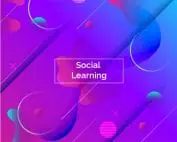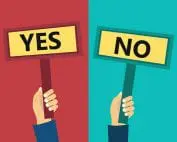Strategic communication skills in volatile times
History may look back on 2021 as the year the workplace changed the way it communicates. From our adoption of communication platforms such as Slack and Zoom to an increased focus on sensitivity and transparency, business leaders must adjust their communication skills and strategies if they want to thrive.
0 1
Overcoming new and old communication barriers
Traditionally, communication barriers boiled down to language, culture, and location. It might be two separate languages, such as German and Spanish, or it could be variations of the same language, such as British and American English. The latter is an example where both language and culture can create communication hiccups.
Location barriers continue to be a challenge as the current workplace consists of people interacting remotely across multiple time zones. The recent surge in telecommuting exacerbated these challenges, forcing us to rely more on email, social media, and video conferencing for conversations we used to have in the break room. Good communication became more difficult.
While email can lead to dips in productivity, video can completely disrupt communication, with someone on the other side of a screen turning off their camera or becoming distracted by other tasks. Moreover, it’s difficult to understand how we are being received when we aren’t in the same room with our colleagues. Verbal communication relies upon visual clues as much as it does words.
An effective communicator is aware of their body language and the signals they’re sending to others. They have honed their interpersonal communication abilities. This begins with self-awareness.
Attuning yourself to your posture and gestures and noticing the same in others increases your ability to empathize and communicate with your colleagues. Do you appear receptive to hearing what others have to say? What about the people on the other side of the screen? Are they fidgeting? Do they look bored?
Self-awareness is trending as a solution to today’s communication challenges. When we’re conscious of how others perceive us and we’re attuned to the signals they send back, we can better connect to them. We pay closer attention to people when we have a connection and they do the same to us. Connection creates engagement and engagement leads to clearer communication.
Prefer to listen?
8 signs your colleague isn’t engaged
Forbes recently published a list of how people behave when they disconnect:
- They look around the room
- They avoid eye contact
- They stare at their Phone
- They talk too fast
- They don’t respond verbally or nonverbally
- They fold their arms or legs
- They furrow their brow
- They slump in their chair
When you see someone in the room or on your screen exhibiting one of these signs, pause the conversation and ask if everything is okay. You can suggest a quick break to refresh and refocus.
- Look at how they feel — Notice the tell-tale signs right in front of you — the sad eyes, the annoyed grimace, the eyes rolling skyward, the continual swallowing.
- Listen to their speech — Listen to the vocal inflections and pace of speaking. Always make allowances for both what and how people are speaking.
- Get rid of distractions — Give people your time and focused attention.
- Avoid going your way — Don’t interrupt and divert a conversation based on a thought you’ve had or something you’ve been waiting to address. Hold off until the speaker is finished.
- Turn off selective hearing — Be respectful and pay attention to all that is said, not just what you find interesting.
- No unsolicited quick fixes — Don’t offer answers that trivialize what is being said. Don’t assume your pithy solutions are right for everyone.
- Be patient — Make sure you understand the gist of what’s being said before jumping in with your take.
“The United States and Great Britain are two countries separated by a common language.” – George Bernard Shaw
0 2
How to understand what someone is really saying
Productive communication begins with effective listening, but communication in 2021 involves Active Listening. When you practice actively listening, you hear, see, and feel what people are communicating because you’re focusing on their verbal, nonverbal, and paraverbal communicatio
Nonverbal Communication: When we communicate, our bodies send messages through our facial expressions, eye contact, posture, gestures, and ways we position ourselves. Nonverbal communication often speaks louder than words.
Paraverbal Communication: This is the way we communicate with pitch, tone, and pace of speech. A voice floating off into a high pitch might indicate a lack of confidence. A monotone voice often indicates boredom. Rapid speech is a sign of nervousness. Paraverbal is not what we say, but how we say it.
When we actively listen, we pick up on people’s nonverbal and paraverbal signals. We also practice the level of self-awareness discussed earlier and are cognizant of our own signals. We remove distractions, open our minds, and give someone our full attention. This attuned focus allows us to establish the connection that cues us into what people are saying with their words, tone, and bodies.
You don’t have to be loud to be heard
“Communication — the human connection — is the key to personal and career success.” – Paul J. Meyer
0 3
Company leaders must become better communicators
Fast Company recently published an article stressing the need for honest dialog and transparent leadership from the top down. In times of volatility or ambiguity, people want to hear from the person in charge. As a company leader, you need to be able to speak to employees in relatable ways. A thought piece in the New York Times addresses stress in the workplace, pointing out that research suggests employees are feeling anxious and vulnerable. Leaders who embrace their own vulnerability provide a means for worried employees to engage with them in meaningful dialog. Vulnerability, even in leadership, isn’t weakness but an empowering connection opportunity.
To discover new ways to engage employees, check out our course on Leadership and Influence.
Employees also expect honest and transparent communication. When having important conversations, it’s critical to stay focused and on task. A strategic approach to deliberate communication is the STAR methodology.
Situation: Describe the situation to your employees in clear terms, outlining Who, What, Where, and When.
Example: On Wednesday I met with our heads of HR and Finance in my office.
Task: What was the task?
Example: We met to discuss our remote work policy moving forward.
Action: State the precise action taken and where you go from here.
Example: We looked at the number of people working full-time remote, those in the office, and those working a hybrid. We looked at our revenue and productivity over the last sixteen quarters as a basis of comparison.
Result: Clearly state the outcome.
Example: We decided to extend our current work model into Q2 next year. We will revisit our decision after the quarterly meeting.
This is merely to get the ball rolling and ensure what’s being communicated is done thoughtfully. The more valuable the content of the communication, the more likely employees will listen and be engaged. Once the conversation begins, much of what a business leader must do is fall back on the good listening practices we outlined earlier.
Communication strategies are shifting to meet the new challenges of the day. Becoming an effective communicator relies upon your ability to listen, your ability to feel empathy, and your awareness of the nuances of communication. Mastering these will give you the leadership ability you need for challenging times.
Common questions
Much of our verbal communication skills can be applied to written communications such as email and text.
- Put aside distractions and focus on the message.
- Read the words, but also pay attention to the tone.
- Notice the punctuation they’ve chosen, such as exclamation marks.
- Don’t start thinking of your reply until you’ve read the entire message.
- Avoid jumping to conclusions or passing judgment until you’ve read the message at least twice.
- If the message is emotional or you feel the need to react or argue, step away from the keyboard.
- When you’re in a calm state of mind, respond respectfully and honestly.
- Make sure you specifically address any concerns listed in the message.
- If the message feels aggressive or pointed, consider moving the conversation to a phone call or in person where you can each get a better read on one another and are less likely to misinterpret what is being said.
Interpersonal communication is the exchanging of information, ideas, and feelings between two or more people through verbal or non-verbal methods. It often includes voice, facial expressions, body language, and gestures.
Friendliness – A friendly tone, personal question, showing interest or a smile encourages open and honest communication
Confidence – Demonstrates conviction and commitment that you will follow through.
Empathy – This shows you are listening and respect other opinions.
Open-mindedness – Maintaining a flexible mindset allows you to embrace other people’s points of view.
Gestures – Waving, pointing, or using your hands when speaking to emphasize and modify what you say.
Eye Contact – Using one’s eyes to communicate attraction, affection, hostility, and interest.
Space – Using personal space can communicate intimacy, affection, or aggression.
Voice – Timing, pace, volume, tone, and inflection convey everything from enthusiasm to disapproval.
This is one of our executive briefings taken from our series of professional online business short courses from ELL. We have over 150 courses online with over 1,000 hours of e-learning covering a wide range of topics across leadership, management and personal & professional development created by industry experts and learning professionals.
Communication Strategies Courses
Whether it”s the speech you deliver in the boardroom, podium, noticing key body ‘tells’ in a negotiation or simply a one-to-one with a team member, the level of attention you give to communication is a key differentiator in building rapport and gaining influence. Our Communication Strategies course will help you understand the different methods of communication and how to make the most of each of them. These strategies will provide a great benefit for any organization and its employees, having a positive impact everywhere throughout the business and in people’s lives.
By the end of this course on communication strategies, you will:
- Develop great speaking skills
- Develop the art of conversation in all aspects
- Understand how to properly question and develop appreciative inquiry
- Move to an advanced level of skills in communication
In each of our business courses, you get access to around six hours of e-learning that you can watch, listen and read. There are usually 100 questions and at the end of the course you will receive a certificate of completion that you can use against any personal or professional development requirements. As well as the course, you also receive a FREE e-book that you can read on your Kindle or other e-reader. You also get a FREE audiobook of the course so you can listen to the whole course uninterrupted on your device.














